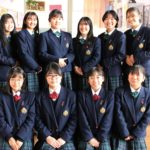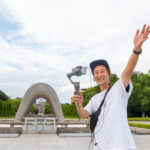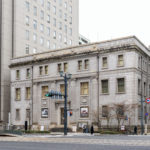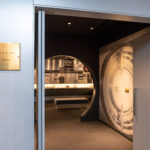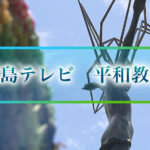The Reconstruction of Educational Institutions and the Significance of Schools in the Reconstruction of Local Communities : Focusing on a School near the Hypocenter
Masayoshi Urabe
Born in 1976, he obtained a doctoral degree in education at the Graduate School of Education, Hiroshima University. Urabe used to be an assistant professor at the Graduate School of Education, Hiroshima University and an associate professor at Tokuyama University. He is currently an associate professor at the Faculty of International Studies, Hiroshima City University. His research field is Comparative and International Education.
Forward
The T-shaped Aioi Bridge located near the A-bomb Dome. Having crossed the bridge, on the opposite bank from the dome, one finds Hiroshima Municipal Honkawa Elementary School. Every April when a new semester begins, in the midst of the cherry trees in full bloom, first-year students in bright new school uniforms carry their school bags on their backs. The sixth-grade students warmly welcome these new entrants and look after them for a year by forming pairs. At school, students are expected not only to study but also to get along with their friends, supporting each other and learning group rules via extracurricular activities. For example, second-grade students form small groups and conduct interview surveys by visiting nursery schools, shops and police stations in the vicinity of the school.
Fifth-grade students learn how to cook okonomiyaki 1), how to use public transportation and how to behave during field trips. Furthermore, in autumn, with support from the PTA2), all students perform plays and sing songs in front of their parents and local residents. Through school life, and watched over by the local community, students develop their knowledge, morals and physical health.
Established in 1873, Motokawa Elementary School is one of the oldest schools in Hiroshima. The three-story reinforced concrete school building incorporating a modern arch design was constructed in 1928, when the school song was established. From that time on, the school was a cutting-edge institute in which students took pride 3).
The atomic bombing in 1945 and the numerous efforts that Motokawa Elementary School made toward recovery were the most unforgettable period in the school’s 140-year long history. Specifically, it should be noted that local reconstruction was centered around schools. This study sheds light on the reconstruction process of educational institutions by focusing on Motokawa Elementary School, which was the closest to ground-zero.
1)Okonomiyaki is Hiroshima’s local specialty cooked on a griddle. Spread out wheat batter and sprinkle fish flakes, and then pile up shredded cabbage, bean sprouts, leeks, tenkasu (bits of tempura batter) and strips of pork belly, making three layers of ingredients. Then, flip over the pancake and let it cook for a while. Once the pancake is cooked, place it with the noodles (soba or udon) over a spread egg. After that, flip it over again then spread okonomi sauce and sprinkle dried green laver. (Hiroshima City Board of Education (2011), Hiroshima City Board of Education edited Hiroshima Peace Note :Junior High school,pp.2)
2)PTA(Parent-Teacher Association)is a private organization consisting of teachers and parents.
3)Ikuma Hirasue (1933), “Souritsu Hyaku Nijushunenshi no Hakkan ni atatte” (On the publication of the 120th anniversary of establishment), In Souritsu 120 Shunen Honkawa (120th Anniversary of Honkawa) Hiroshima Honkawa Elementary School, p.3
Tags associated with this article



